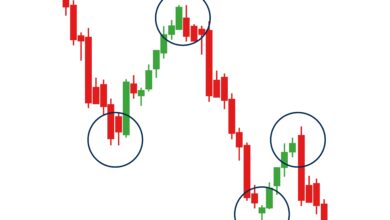Trading Sessions
Trading Sessions: Understanding the Best Times to Trade in the Financial Markets
Introduction:
Trading in the financial markets requires careful consideration of various factors, including market liquidity, volatility, and trading sessions. Understanding the different trading sessions and their characteristics is essential for optimizing trading opportunities and maximizing potential profits. In this article, we will delve into the concept of trading sessions, explore the major financial markets, and provide insights on the best times to trade
1. The Forex Market:
The forex market operates 24 hours a day, five days a week, providing ample opportunities for traders worldwide. It is divided into three major trading sessions:
a. Asian Session: The Asian session begins with the opening of the Tokyo market. It is known for its relatively lower volatility compared to other sessions. Currency pairs involving the Japanese yen (JPY) are particularly active during this session.
b. European Session: The European session is the most active and liquid session, primarily driven by the opening of major financial centers like London, Frankfurt, and Zurich. This session sees high trading volumes, making it ideal for day traders and those seeking increased price movement.
c. North American Session: The North American session is influenced by the opening of New York, the largest financial market in the world. It overlaps with the European session, leading to increased liquidity and volatility. Major economic news releases from the United States can significantly impact currency pairs during this session.
2. Stock Market Sessions:
Stock markets also have distinct trading sessions, which vary depending on the region. The two most prominent sessions are:
a. Pre-market Session: The pre-market session occurs before the official market opening. It allows traders to react to overnight news and corporate announcements. While liquidity is generally lower during this session, it can provide valuable insights for day traders and investors.
b. Regular Trading Hours: The regular trading hours are when the majority of stock market activity takes place. This session varies across different stock exchanges, such as the New York Stock Exchange (NYSE) and the London Stock Exchange (LSE). Liquidity and trading volume are typically highest during this period.
3. Commodity Market Sessions:
Commodity markets, including energy, metals, and agricultural products, also have specific trading sessions:
a. Crude Oil Market: The crude oil market has a primary trading session that aligns with the European and North American sessions. Supply and demand factors, geopolitical events, and economic data can significantly impact crude oil prices during this period.
b. Gold Market: The gold market operates 24 hours a day, with major trading centers in London, New York, and Zurich. These sessions overlap with the European and North American trading sessions, resulting in increased liquidity and price movement.
4. Factors to Consider:
When determining the best times to trade, several factors should be considered:
a. Market Overlaps: Overlaps between different trading sessions can lead to increased volatility and trading opportunities. For example, the overlap between the European and North American sessions offers heightened liquidity and is particularly favorable for forex trading.
b. Economic News Releases: Major economic news releases, such as employment data, central bank announcements, and GDP reports, can significantly impact market volatility. It is advisable to be aware of scheduled news events and adjust trading strategies accordingly.
c. Personal Schedule and Time Zone: As a part-time trader, consider your availability and the trading sessions that align with your schedule. Choose sessions that offer the best market conditions during your available trading hours.
Conclusion:
Understanding trading sessions and their characteristics is crucial for optimizing trading opportunities and managing risk effectively. By aligning your trading activities with the most active and liquid sessions, you can increase the likelihood of finding favorable market conditions and potential profits. Remember to consider the specific characteristics of each financial market, economic news releases, and your personal schedule when determining the best times to trade. Continuously monitor market conditions and adapt your strategies accordingly to enhance your trading success.






